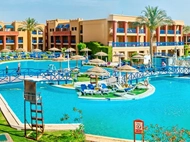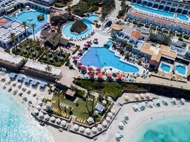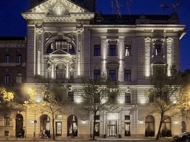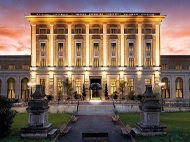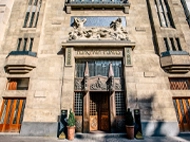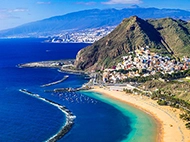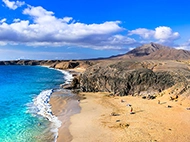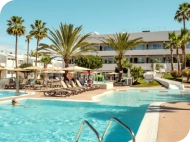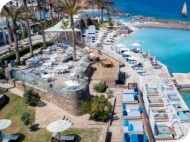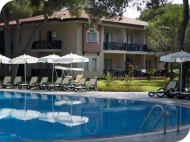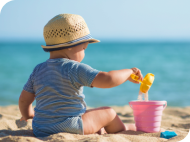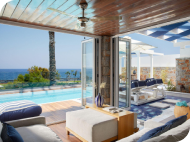Planning to visit the region? Here’s five things you shouldn’t miss.
1. Mountaintop Monasteries
 Sant Pere de Rodes
Sant Pere de Rodes
A visit to one of the region’s mountaintop monasteries will transport you to Romanesque architecture from the Middle Ages. Ask someone to name one in Catalonia and they’ll probably say Montserrat, but the region has numerous examples that are well worth a visit. A 20km drive up a twisty mountain road from Roses (or a 25km drive from Figueres) will take you up to the monumental site of Sant Pere de Rodes. From the moment you park your car you’ll be greeted with magnificent views, extending to the coast and beyond. The monastery entrance is then just a short walk along a surfaced track. Inside guided tours (available in English) and information boards (in Spanish and Catalan only) give you the background to the Benedictines and the origins of the building. There’s no resident monks as the last ones left in 1798, with the site being restored in the last century. Not interested in religious history? There’s still plenty to admire. As you enjoy the views you can even treat yourself to a cheeky little glass of the renowned Grenache dessert wine. As well as the monastery there’s remains of the former village of Santa Creu to explore.
Travel Tip: In July and August an annual music festival is held at Sant Pere de Rodes. The excellent acoustics mean your ears will be in for a treat.
2. Medieval Villages
 Village of Peratallada
Village of Peratallada
The coastal resorts are a relative newcomer to the region. In bygone days settlements were built in locations that would be difficult for pirates to reach. Today there’s a collection of attractive villages that many tourists miss. The centrepiece of Castello d'Empuries is the Santa Maria Basilica that combines both Catalan Gothic and Romanesque styles. Alternatively, you may decide to wander the beautifully restored cobbled streets of Pals. One place you shouldn’t miss is Peratallada. The name is derived from pedra tallada, meaning 'carved stone’ and you could spend an entire morning exploring the maze of narrow streets that lead you to quaint cafes and shops in ancient stone buildings.
Travel Tip: The buildings in Peratallada retain a medieval appearance. But if you want to experience what life was like back then, visit on the first weekend of October. This is when the annual Feria Medieval de Peratallada takes place.
3. Magnificent Museums
 Dali Theatre Museum
Dali Theatre Museum
There’s no shortage of museums in this part of Spain and there’s a collection of unusual ones too. In Castello d'Empuries you’ll find a flour museum, while in Santa Cristina d'Aro you can pick up some tricks at one specialising in magic. But the most unique one has to be the Dali Theatre Museum in Figueres. As the name suggests the building was originally a theatre but it was damaged in the Spanish Civil War. In the 1960s Salvador Dali rebuilt it and made his artwork the performance. His pieces are not displayed in chronological order or using any form of systematic function - that’s not the way he worked! Expect to see a painting that changes into a different one when you take a photo of it. In the days before digital cameras, imagine getting home and getting your film developed, only to find the photo is of a different painting to the one you remember seeing! The unusual concepts don’t end there - he also created a piece where a Rolls Royce appears to fill up with water! If you’re not all that familiar with the life and work of Dali it’s advisable to undertake a guided tour. Even if you choose to view the pieces independently it’s best to reserve tickets in advance, otherwise you may have to join a long queue.
Travel Tip: Dali’s go-to place for meals with journalists was Duran Hotel & Restaurant. For the full experience reserve a table in the old part of the restaurant (dating from 1855). It’s still set out the way it was when the great artist dined there. If you’re really lucky you might even get to sit at Dali’s place at the table!
4. Nature Parks
 Garrotxa Volcanic Zone Natural Park
Garrotxa Volcanic Zone Natural Park
The Costa Brava & Girona Pyrenees region boasts eight spectacular nature parks from the maritime-terrestrial Cap de Creus to the volcanic landscapes of Garrotxa. The beauty of the abrupt cliffs and secluded coves of Cap de Creus inspired Dali. Here, the waters are clean and pure, allowing coral and seaweed meadows to flourish. You can be forgiven for not knowing about the volcanic landscapes of Garrotxa. They are often overlooked in favour of their more famous cousins in the Canaries. But with 38 volcanic cones over 15,000 hectares there’s plenty to explore, with a variety of different walking and cycling routes to choose from. On the way you can stop off at medieval castles, historic churches and ancient bridges. And if that wasn’t enough the Brugent River provides a series of exotic spots for open water swimming.
Travel Tip: As the region is closer to France than Madrid, the area experiences each of the four seasons. So if you fancy a hike while being surrounded by golden foliage then October is the perfect time to visit, but don’t leave it until mid-winter - unless you wish to go snowshoeing.
5. Gastronomy
 Dish of botifarra and beans
Dish of botifarra and beans
The region’s coastal spot in northern Iberia has numerous culinary influences. Today it’s home to the most Michelin stars per capita in the world. So whether you wish to sample local foods in an informal tapas bar or want to try a more extravagant tasting menu at one of the high-end restaurants, there’s something for you. As you’re in the north of Spain you’ll find apples used in dishes over oranges. The Catalan’s produce their own take on apple pie, or for something unusual there’s botifarra - a sweet sausage with apple. Cheese lovers won’t want to miss out on the croquettes. While there’s an endless list of the way they use fish from meatballs with cuttlefish to prawn skewers. The chefs are always coming up with inventive ways of using the local ingredients. And with all those dishes you’ll want a drink to go with them. It’s probably no surprise that there’s an abundance of vineyards in the region, meaning there’s plenty of different wines to sample.
Travel Tip: At Park Hotel San Jorge it’s possible to experience the region’s flavours without even leaving the comfort of the hotel. The chef, Cristina Pey, has expertly created a menu that includes prawn croquettes, ratatouille, cod confit and grilled sirloin steak. For dessert you may wish to sample the mascarpone cheese and amaretto coffee cream custard. Prefer small plates of food? The hotel also has a tapas bar, open for at least 10 hours per day.

About the author
Edmund Myerscough loves exploring new destinations. His favourite holiday, so far, was a trip to the Balkans that included Dubrovnik, Mostar and Kotor.
